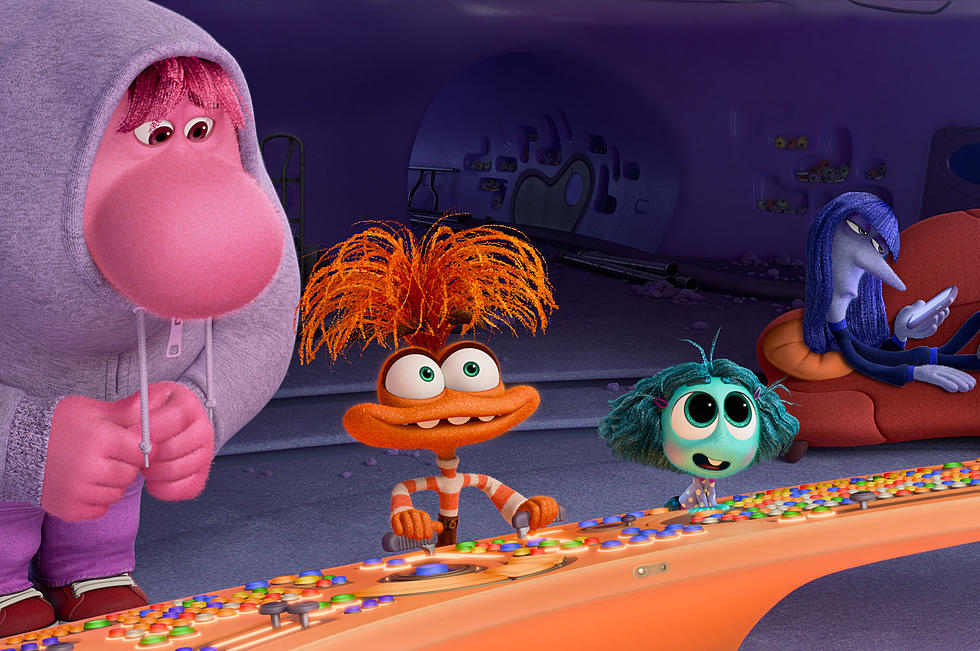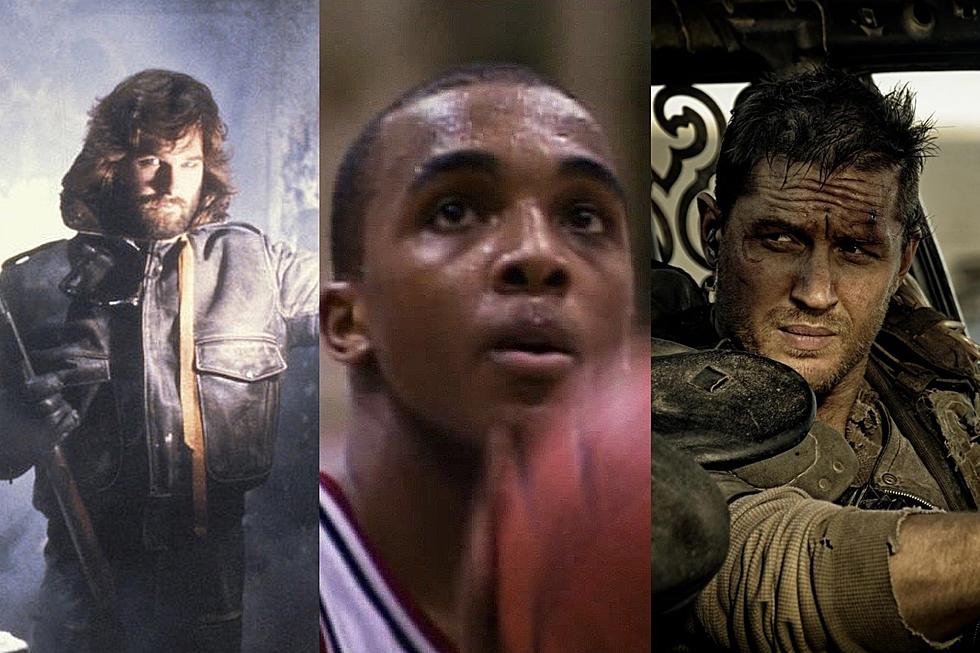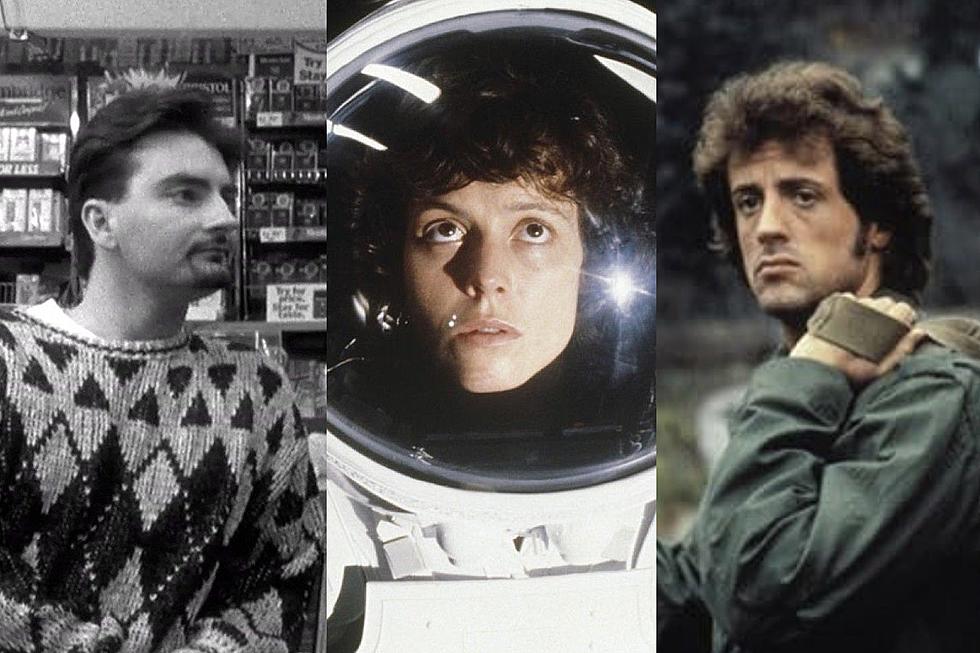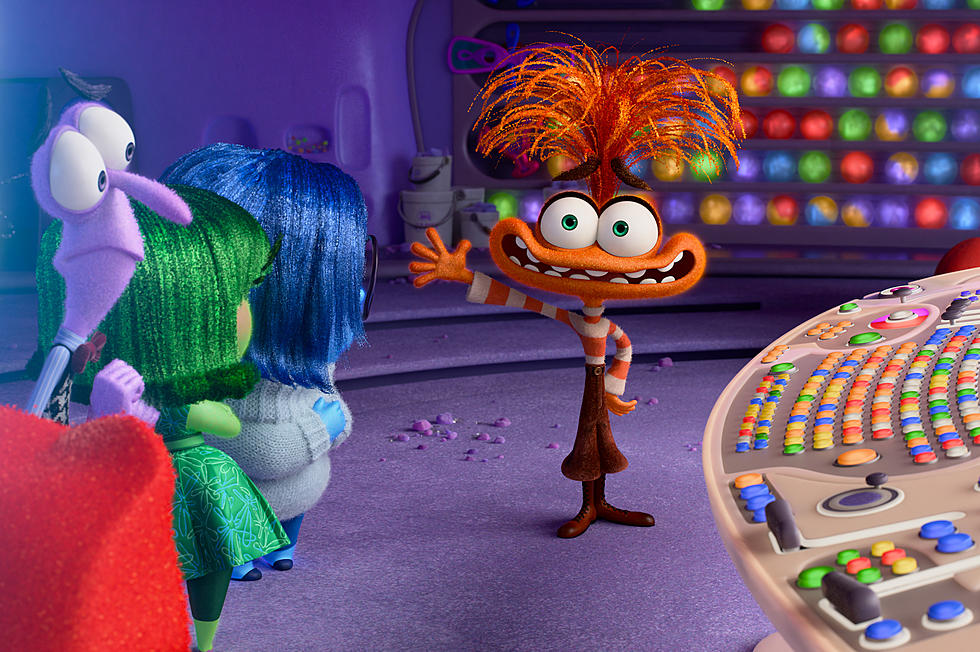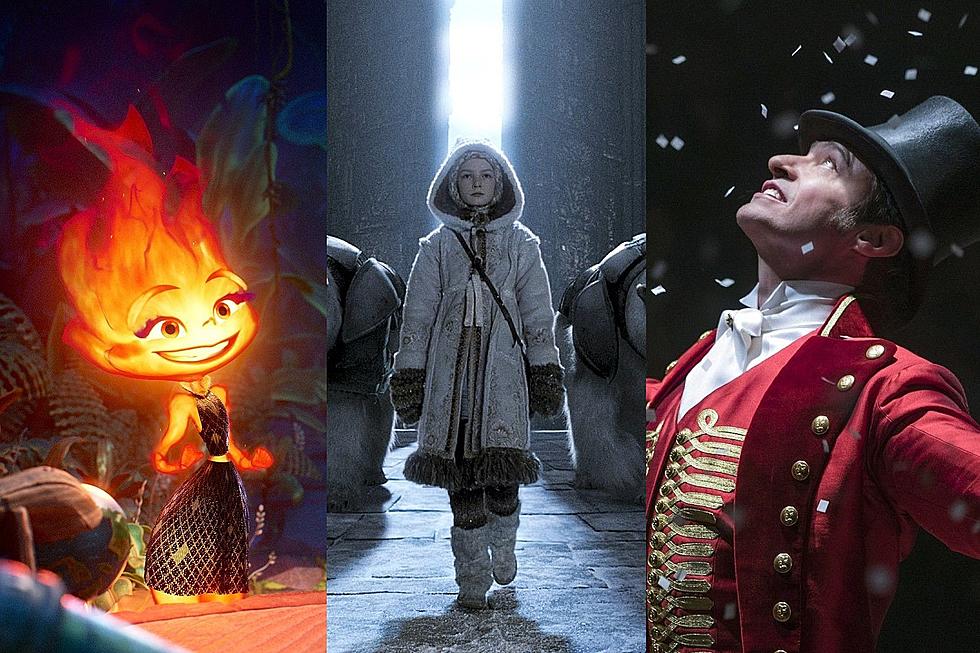
Andrew Stanton and Lindsey Collins on ‘Finding Dory,’ Making Sequels, and What They Learned From Steve Jobs
“I like that the title of your outlet has one of our characters’ names in it.”
Those were the first words spoken by Andrew Stanton, director of Finding Nemo, WALL-E, and John Carter, as we start our phone interview about his newest creation, Finding Dory. And he’s right. By coincidence, ScreenCrush shares half a name with Crush, one of the scene-stealing sea turtles from both Nemo and Dory (voiced, as it turns out, by Stanton himself).
From there, the conversation quickly proceeded to the development of Dory, which arrives 13 years after Stanton’s original film. This time, forgetful Dory (Ellen DeGeneres) suddenly remembers a glimmer of the family she left behind many years earlier, so she sets off across the Pacific Ocean to find them with her friends Marlin (Albert Brooks) and Nemo (Hayden Rolence) along for support. Eventually, they arrive at a Marine Life Institute, where they make new allies (like Hank the Octopus, voiced by Ed O’Neill) and pick up the trail of Dory’s parents, who are played by Eugene Levy and Diane Keaton.
My discussion with Stanton and his longtime producer Lindsey Collins started there, with Dory’s parents and history, and continued to topics like the rumored revisions to the story that were made in the wake of the controversial documentary Blackfish, the particular difficulties (or advantages) of making sequels, and the most underrated Pixar movie.
Andrew, how much of Dory’s backstory did you have in your head when you made the first movie, and how much was conceived specifically for the sequel?
Andrew Stanton: You’re the first person to ask that. The truth is, I knew she had wandered the ocean for a very long time, and had a compounding sense of abandonment; that her short-term memory loss had probably caused her to lose any friends she had made by either forgetting them or them getting annoyed with her and ditching her. And so that was always in her backstory when I created her. I didn’t have to go there and say all that, but I could see that sort of behind her, and part of why she’s so optimistic and so friendly is a little bit of armor to try to hope that the next person she meets — and in our case, in the first movie, it was Marlin — that if she’s nice enough and helpful enough, she won’t get ditched again.
But I never knew where she came from specifically and who her parents were. That was definitely discovered on this film, and we went through several versions before we landed on what finally made it into the film.
What changed over the course of time as you were looking for the right version?
AS: Well, [Dory] says this line [in Finding Nemo] “I suffer from short-term memory loss, it runs in my family … at least I think it does.” And so we fell into the trap of thinking “All right, let’s make it run in the family.”
Ah.
AS: But having three characters on the screen with short-term memory loss will drive any viewer out of the theater.
Lindsey Collins: It’s really frustrating!
AS: Yeah, we learned that the hard way. So we decided the back part of that sentence — “at least I think it does” — was really the truth, in that she’s wrong on that fact. So that was one of the adjustments we had to make.
We also weren’t sure where exactly we wanted Dory to be from, and we only had the clues that we had laid inadvertently in the first movie of things she seemed to know, like how to speak whale and that she can read. We didn’t feel like we had to stick to those, but we were using them as guidelines. So we ultimately came to the decision that it was a place that was either near or in a man-made area, that was around human beings and society. And that slowly led us to where we are.
LC: And also, I think one of the biggest changes or evolutions on the film was actually in showing the audience what happened. Because we went around many different ways on this in terms of do we just have it be something that’s talked about or do we never have it be something that’s talked about — does she have a memory of it or does she not have that memory? So what you see in the film now, which is the opening of the film, and then to have it play out as these memories that she gains throughout, those were later changes or adjustments to figure out how we can tell that story and have the audience invested right there with her. It took a lot of time.
Speaking of adjustments, I read an article in The New York Times from 2013 that claimed the Finding Dory storyline was changed as a result of the documentary Blackfish. Was that report accurate?
AS: That got a lot of exposure because the movie got so much exposure. But the truth is, that’s one of many things that we researched that have guided our story. The truth is, we’re always researching. There were things we learned at the Monterey Bay Aquarium, there were things we learned at the Marine Mammal Center, and up at the Vancouver Aquarium, and other things that just didn’t have a lot of sexiness to the outside world. But we, on every one of our films, are always researching and changing our story based on what we find.
I wanted to talk a little about the visuals in the film. Obviously, all the returning characters look the same, but I have to assume that computer animation technology has changed so much since you made Finding Nemo. So how do you balance maintaining the look of the old, so it’s familiar to returning fans, while making the visuals feel modern and contemporary for 2016?
LC: Yeah, that was tricky. The first thing to know is nothing that we had made [on Finding Nemo] still exists. As Andrew said to someone else, it’s like trying to boot up your old computer from 13 years ago. It just doesn’t exist. So we knew going in that we were going to be rebuilding and recreating anything that we were going to be using from the first film; characters or sets. And then invariably the question comes up: How much are we going to change it? Because, to your point, the rendering and the imagery and the capabilities are so much better 13 years later.
It’s always a delicate balance. What we really challenged ourselves with was the one scene that we replay from the first film, of Marlin and Dory’s first meeting.
Right.
And we knew we’re going to replay that scene, not exactly, but it’s going to be pretty darn close. And so that’s the perfect test for us to see what we can get away with in terms of improving the look without it destroying what everybody knows. So it really was walking a very fine line where you want to take advantage of the new technology but you also have an audience that is very familiar with the look of these characters and these sets.
The nice thing too is that we had so many new characters and so many new sets that we got push things once we got to that area.
AS: A lot of people don’t realize that for as realistic as the ocean looks in Nemo and Dory, it’s actually designed to look a little more organic and organized than the real ocean does. It’s a little prettier and a little more impressionistic. So that aesthetic we kept to exactly the way we did in the first film. We’re just able to render it and make it look a hell of a lot better, but it’s still the same design aesthetic.
LC: There’s no way we could have made this film 13 years ago. The thing that was the hardest to do in a weird way — I mean, everything was hard — but what was hard to do 13 years ago was actually all the Tank Gang scenes, because of the reflections and refractions of glass and water, and how light bounces through all that stuff. That was all cheated on the first film and now we have a new render that makes it a lot easier. So all of the containers and glass and coffee pots and tanks that we take such advantage of on this film would have been literally impossible.
AS: Yeah, it would have brought us to our knees.
I’m sure when you guys made John Carter you were asked about the differences between working in live-action and animation, and moving from one medium to another. Now that you’re back working in animation, I’m curious what you learned from your time in the live-action medium that you applied to Finding Dory, that you wouldn’t have done, and didn’t do, on Finding Nemo.
AS: I think going back the main thing was we’re not going to sweat the small stuff so much because we have time on our side on animation. You knew you were going to get another chance at that in the last year and a half, whereas in live-action you have to hit it right then and there.
LC: Yeah.
AS: You learn to appreciate time.
I imagine how you described the visuals — making them familiar, but also giving people something new at the same time — is kind of a microcosm of making sequels in general. Just last weekend there several big articles about sequels having trouble in the box office. I’m sure you guys talked about how to make something that would feel fresh and also please fans of the original.
AS: No. I think that’s the worst thing you could do.
[laughs]
AS: It is. Because I never did that with the original. I went with what I wanted to see and then as long as the other people that were making it with me that I trust with my life creatively agreed — if that defies the logic of the outside world, then we should just go with it.
Steve Jobs taught us that it’s our job to know what people want before they do. We’re artists. I follow other artists because of where they’re going forward, not because they’re trying to second-guess me. I hope I’m not treated like a commodity or a product when I’m an audience member for other artists that I like.
I tried to do the same on my sequel. I said, as a fan of my own story, this is where I’d like to go, this is what interests me. If that doesn’t interest the other people that are making it with me, that’s where it stops. So it gets the same quality control as the original.
LC: I would just add, and I think all of that is absolutely true — the man is not lying to you, he says that every day. But the other thing to say is doing a movie 13 years after the original — we kind of felt a little bit of it on Toy Story 3, not us personally but the studio did — we would never assume in any way shape or form that an audience is built in 13 years later. We always go “Let’s treat this as no one’s seen the first one.” This is its own standalone movie that 40 years from now someone’s going to pull this off the shelf and, because of the title, they won’t know if it came first or second or whatever. I think you have to shut it all out, and then go “Okay, we’re going to be true to the characters” and then treat it with just as much struggle and strain as the rest of our films.
Is it more difficult to make the original thing from scratch or to return to something you’ve already done very successfully once where there are expectations?
AS: The anticipation and expectations have haunted every movie we’ve made after Toy Story, simply because of the pressures of being successful. So that comes with any project we do no matter if it’s a sequel or an original.
The only thing that’s a slight advantage — and it only lasts for maybe the first three to six months on a sequel — is that you already know half your characters. And they take a long time to bake and to learn and to create. And then they start to slowly turn into the bane of your existence and a curse, because you can’t change them like you could change them in the original. Because they’re already out there. Then for the rest of your three and a half years on it, it’s just as frustrating and just as hard as the original.
You mention the expectations around Pixar movies. People love Pixar, and they love ranking all the Pixar movies. I won’t ask you to pick a favorite Pixar film, because that doesn’t seem fair, but I’d love to know if you guys have a pick for the most underrated Pixar movie; the movie that deserves a little more appreciation.
AS: I’m going to vote for A Bug’s Life just because it’s kind of like the poor forgotten child.
LC: Like the middle child, yeah.
AS: It’s one of those movies where whenever I watch it, it cracks me up.
LC: I like that movie, too. The one I also always like for all kinds of reasons: I love Toy Story 2. It felt like everybody was on their game, on point, on that film, and I love it. I think there’s not a wasted minute in that film.
AS: It’s such a great honor and privilege to be where there’s that debate, like what’s the best one or what’s the forgotten one. It’s like “Wow, we’re in double digits!” It kind of freaks me out.
I have a five-month-old daughter. It’s a few years away, but I’m already getting excited about introducing her to movies. As parents and filmmakers who make things for kids, what would you recommend as a first movie to show a child?
AS: My Neighbor Totoro.
LC: The movies I have memories of as a kid are the ones that made me feel something. Obviously there were a lot that made me laugh, but the ones that I remember watching for the first time are the ones that scared me or made me sad or I projected onto the film.
AS: This is a big lead-up to saying The Goonies, isn’t it?
LC: It’s Goonies.
[laughs]
AS: [laughs]
LC: No, I feel that way about E.T. I cried as a kid watching that movie. It’s about empathy, when you introduce that to kids for the first time.
AS: Yeah.
LC: I love The Good Dinosaur. I love Nemo. These are all movies I’ve certainly shown my kids, and I see them actually for the first time empathizing with a character they’re watching. They’re world gets a little bit bigger.
Finding Dory opens in theaters this Friday.
Check out a Gallery of the Best Pixar Easter eggs:
More From ScreenCrush
